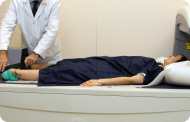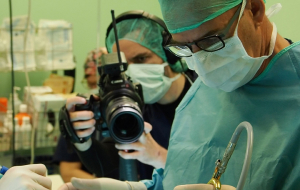
Stress management
Stress
Stress is the process that is set in motion when there is an imbalance between environmental demands and a person's coping resources. Due to this imbalance, the person experiences psychological, behavioural, and physiological responses to adapt to the threatening situation or event.
What is stress?
Stress is the process that is set in motion when there is an imbalance between environmental demands and a person's coping resources. Due to this imbalance, the person experiences psychological, behavioural, and physiological responses to adapt to the threatening situation or event.
Human beings constantly use psychic resources to adapt and respond to environmental changes, which is why a certain amount of stress, called eustress or positive stress, is necessary and beneficial for individual survival and evolution.
Distress or negative stress (a subjective state of discomfort) does not distinguish between age or gender, and is the type commonly associated with the word ‘stress’. In other words, when people talk about stress, they usually mean distress.
This appears when a stressful experience becomes more intense or prolonged and the psychophysiological adaptive response fails, resulting in a range of symptoms known as stress indicators that significantly disrupt personal, social, professional, and health aspects.
Distress disrupts and neutralises our adaptive resources. In 1956, Selye noted that the stress response comprises three phases. The first phase, alarm, begins immediately after the threat has been detected, with activation symptoms appearing. In the second phase (resistance), the organism begins adapting while maintaining some activation from the previous stage.
If the stressful experience persists, we may enter the third phase (exhaustion), where the body ultimately exhausts all its resources and adaptive capacity.
InstituteMYM would like to remind you that today, living without stress is possible.
What causes stress, and how do we diagnose it?
There are many causes and factors that can lead to pathological stress conditions. The most frequent cases seen in our clinic will be divided into two groups: causes of psychological origin and causes of environmental origin, although stress typically arises from a combination of both to varying degrees.
Shy individuals are more vulnerable and sensitive to stressful situations. Diseases involving fatigue and pain, hormonal disorders, relationship problems, work challenges, severe illness, changes in routine, and fierce competitiveness are other frequent causes we address.
Ultimately, we can know that a person is suffering from stress by the appearance of various stress indicators. These could be classified into three broad groups:
- Neuroendocrines: in response to stimuli that cause alarm or pose a threat to the individual, the body reacts by activating the sympathetic nervous system, preparing it for a fight-or-flight response. This reaction is adaptive and provides the individual with tools essential for their survival. When this activation becomes chronic, it will have tremendously negative consequences for the person’s health. It is worth noting that systems such as the immune system can be affected by stress.
- Psychophysiological: e.g. tachycardia, hypertension or bradycardia.
- Psychological:
-
- Anxiety, fear, anger, and depression: Different types of symptoms depending on severity: mild, moderate, severe, and even panic.
- Somatic alterations: Fatigue, insomnia, trembling, and pain in different parts of the body.
- Cognitive impairments: Memory loss, indecision, frequent forgetfulness, mental acceleration or blocking.
- Behavioural alterations: Smoking, eating behaviour disorders, psychomotor agitation, increased drinking and smoking, nervous laughter and nail biting, among others.
Emotional and somatic indicators are closely interrelated and frequently cause each other. For example, anxiety seems more related to temporary stress, while depression is associated with chronic stress.
At instituteMYM, we specialise in stress
How do we treat stress?
Since prevention is the most effective approach to managing stress, at instituteMYM we believe that understanding the patient’s biopsychosocial context is essential to developing a personalised treatment plan.
A thorough medical history, psychometric tests, and a psychopathological evaluation by a mental health specialist (psychiatrist/psychologist) will allow us to make an accurate diagnosis and proceed with a personalised treatment plan.
In general, it is essential to maintain proper biorhythm regulation and ensure that the patient follows suitable hygiene and dietary practices, including sleeping at least 7 to 8 hours per night, maintaining a balanced and healthy diet, and engaging in regular, non-competitive exercise, to minimise the adverse effects of stress.
At a psychotherapeutic level, we will use a multi-faceted approach focusing on treating physical aspects by teaching relaxation techniques such as Jacobson’s progressive muscle relaxation, which aims to counteract physiological reactions to stress. We also emphasise all necessary behavioural changes and focus cognitively on three key areas: replacing exaggerated negative thoughts, conducting psychoeducational workshops to manage stressful situations, and helping individuals cope more effectively with future conflicts, ultimately fostering greater self-confidence.
From a strictly pharmacotherapeutic perspective, tools will be used to relieve both physical and psychological symptoms potentially linked to stress. Depressive disorders, with or without insomnia and anxiety, are the most common syndromes underlying stress.
Among adjunctive therapies, we offer personalised nutrition, physical exercise guidance, and acupuncture as a neuromodulation technique for stress.
At instituteMYM, we can prevent your stress.


































